
The Palazzo Canigiani, initially built as Palazzo Bardi-Larioni, and later also known as Canigiani-Guigni is a Neoclassic-style palace located in Via de' Bardi 28 in the quartiere of Santo Spirito in central Florence, region of Tuscany, Italy.

The Palazzo Canigiani, initially built as Palazzo Bardi-Larioni, and later also known as Canigiani-Guigni is a Neoclassic-style palace located in Via de' Bardi 28 in the quartiere of Santo Spirito in central Florence, region of Tuscany, Italy.
Part of the site was once occupied by the Palazzo Larioni de' Bardi, and the ancient hospital of the Church of Santa Lucia dei Magnoli. From various buildings, a larger domicile had been constructed by 1283. At this early palace was born Eletta de' Canigiani, the mother of Petrarch. [1] In 1465, the bankrupt Bardi sold the palace to the Canigiani. [2] Between 1819 and 1838, Tommaso Giugni, who had married the last heir of the Canigiani, refurbished the structure, both the interiors and facade, in a neoclassical style. That reconstruction included the destruction of a 17th-century fresco depicting an encounter between Saints Dominic and Francis that occurred in the hospital. However, there is no historical documentation of this encounter.
In the hospital in 1994, the British art historian Sir John Pope-Hennessy died at this site. [3]

Villa del Poggio Imperiale is a predominantly neoclassical former grand ducal villa in Arcetri, just to the south of Florence in Tuscany, Central Italy. Beginning as a villa of the Baroncelli of Florence, it was seized by the Medici, became the home of a homicidal and unfaithful husband, and a lavish retreat for a Grand Duchess with imperial pretensions. Later given to Napoleon's sister, it was reclaimed by the hereditary rulers of Tuscany before being finally converted to a prestigious girls' school. During its long history, it has often been at the centre of Italy's turbulent history, and has been rebuilt and redesigned many times.

Palazzo Mozzi or Palazzo de' Mozzi is an early Renaissance palace, located at the end of the Piazza de' Mozzi that emerges from Ponte alle Grazie and leads straight to the palace where via San Niccolò becomes via de' Bardi in the Quartiere of Santo Spirito in the Oltrarno section of Florence, region of Tuscany, Italy. The 13th-century palace housed the gallery of the highly successful antiquarian Stefano Bardini, of which the remnants were left to the commune, where they assembled the Museo Bardini or Mozzi Bardini, displaying Florentine art and artifacts up to the early Renaissance. The gardens elaborated against the hillside behind the palace were added mainly by Bardini.
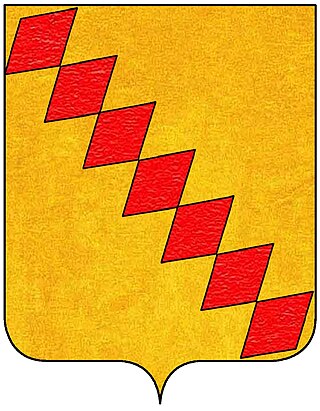
The House of Bardi was an influential Florentine family that started the powerful banking company Compagnia dei Bardi. In the 14th century the Bardis lent Edward III of England 900,000 gold florins, a debt which he failed to repay along with 600,000 florins borrowed from the Peruzzi family, leading to the collapse of both families' banks. During the 15th century the Bardi family continued to operate in various European centres, playing a notable role in financing some of the early voyages of discovery to America including those by Christopher Columbus and John Cabot.

Palazzo Spini Ferroni is a large Gothic palace located along Via de' Tornabuoni at the corner of Piazza Santa Trinita, in central Florence, region of Tuscany, Italy. It stands across from the church of Santa Trinita.
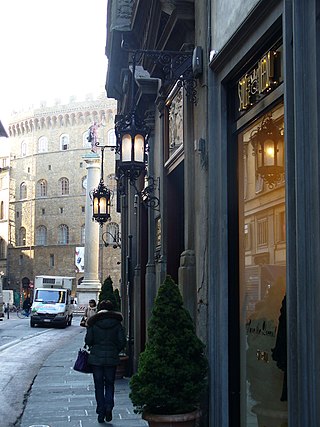
Via de' Tornabuoni, or Via Tornabuoni, is a street at the center of Florence, Italy, that goes from Antinori square to ponte Santa Trinita, across Santa Trinita square, distinguished by the presence of fashion boutiques.
The architecture of Rome over the centuries has greatly developed from Ancient Roman architecture to Italian modern and contemporary architecture. Rome was once the world's main epicentres of Classical architecture, developing new forms such as the arch, the dome and the vault. The Romanesque style in the 11th, 12th and 13th centuries was also widely used in Roman architecture, and later the city became one of the main centres of Renaissance and Baroque architecture. Rome's cityscape is also widely Neoclassical and Fascist in style.
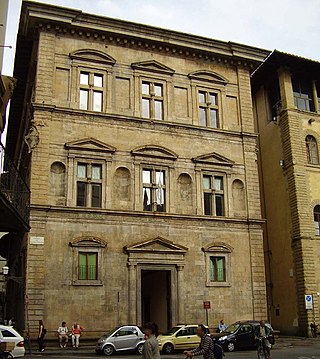
The Palazzo Bartolini Salimbeni is a High Renaissance-style palace located on Via de Tornabuoni on Piazza Trinita in central Florence, Tuscany, Italy.

Palazzo Capponi alle Rovinate is a late-Gothic and early Renaissance-style residential palace located on Via de' Bardi in Florence, region of Tuscany, Italy. There are apparently three other palaces once associated with the Capponi family:

Palazzo dello Strozzino is a Renaissance palace in Florence, region of Tuscany, Italy. The stone Renaissance facade is located on Piazza degli Strozzi, diagonal to the Southeast corner of the imposing Palazzo Strozzi. The Northern façade on Via dei Anselmi houses the entrance to the Cinema Odeon.

San Niccolò al Carmine, also called Santa Maria del Carmine is a Renaissance style, Roman Catholic church and monastery located in Pian dei Mantellini #30, near the corner of Via della Diana in the Terzo de Citta of Siena, region of Tuscany, Italy. The church now serves as the Oratory for the Contrada of Pantera. Across the street from the belltower is the Palazzo Celsi Pollini. North along Pian dei Mantellini, toward the Arco delle Due Porte, and on the same side of the street are a number of palaces built around what was once the Monastery of the Derelict Women: in order they are the Neoclassical Palazzo Incontri, the Palazzo Ravissa and the Palazzo Segardi.
The Palazzo Sergardi or Sergardi Biringucci is an 18th-century aristocratic palace located on Via Montanini #110 in the city of Siena, region of Tuscany, Italy; the palace is best known for its late 18th century Neoclassical frescoes by Luigi Ademollo.

The Casino Mediceo di San Marco is a late-Renaissance or Mannerist style palace located on Via Cavour number 57 and via San Gallo in Florence, region of Tuscany, Italy.

The Palazzo Nasi, also known as the Palazzo Torrigiani or Palazzo Scarlatti, is a palace located at Piazza de' Mozzi 4, down the street where the Ponte alle Grazie enters the Oltrarno, in Florence, Tuscany, Italy. Another Palazzo Torrigiani Del Nero, with a Mannerist or late-Renaissance-style facade stands closer to the river. Both palaces also once belonged to the Nasi. The palace is a few steps from the Palazzo Mozzi.
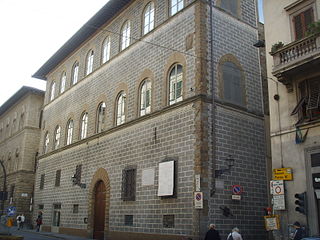
The Palazzo Busini Bardi is a palace located on Via dei Benci #5 in central Florence, Tuscany, Italy. It is in front of the Museo Horne.
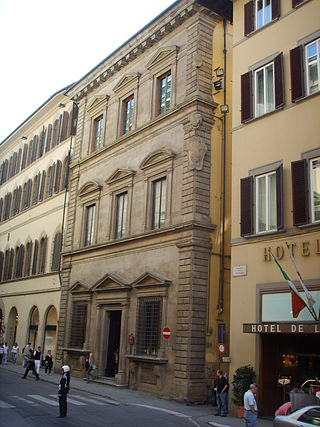
The Palazzo Larderel, once Tebalducci and Giacomini is a Renaissance-style palace, located on Via de' Tornabuoni number 19, corner via de' Giacomini 1, in the city of Florence, region of Tuscany, Italy.

Palazzo Ginori is a Renaissance-style palace in Via de' Ginori # 11 in the Quartieri San Giovanni of the city of Florence, Italy.
The Palazzo Tempi, also known as Palazzo Vettori or Bargagli Petrucci, is a palace located along the Arno river at the narrow Piazza Santa Maria Soprarno 1, corner with Via de' Bardi and Costa dei Magnoli in the Oltrarno section of Florence, Tuscany, Italy. The palace is across the river from the Galleria of the Uffizi, and a block east of the Ponte Vecchio. The Via de' Bardi originates in an arch under the building.
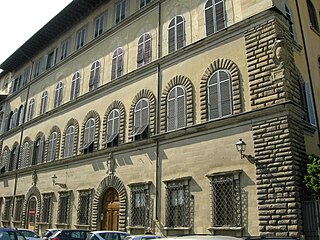
The Palazzo Torrigiani Del Nero is a Renaissance-style palace located at Piazza de' Mozzi 5, down the street where the Ponte alle Grazie enters the Oltrarno in Florence, Tuscany, Italy. Another Palazzo Torrigiani stands alongside, the smaller Palazzo Nasi. Both palaces also once belonged to the Nasi.

The Palazzo Frescobaldi is a Renaissance-style palace located in the Borgo Santo Spirito of central Florence, region of Tuscany, Italy. It located on via Santo Spirito 11-13. The garden abuts the rear of the Basilica di Santo Spirito.